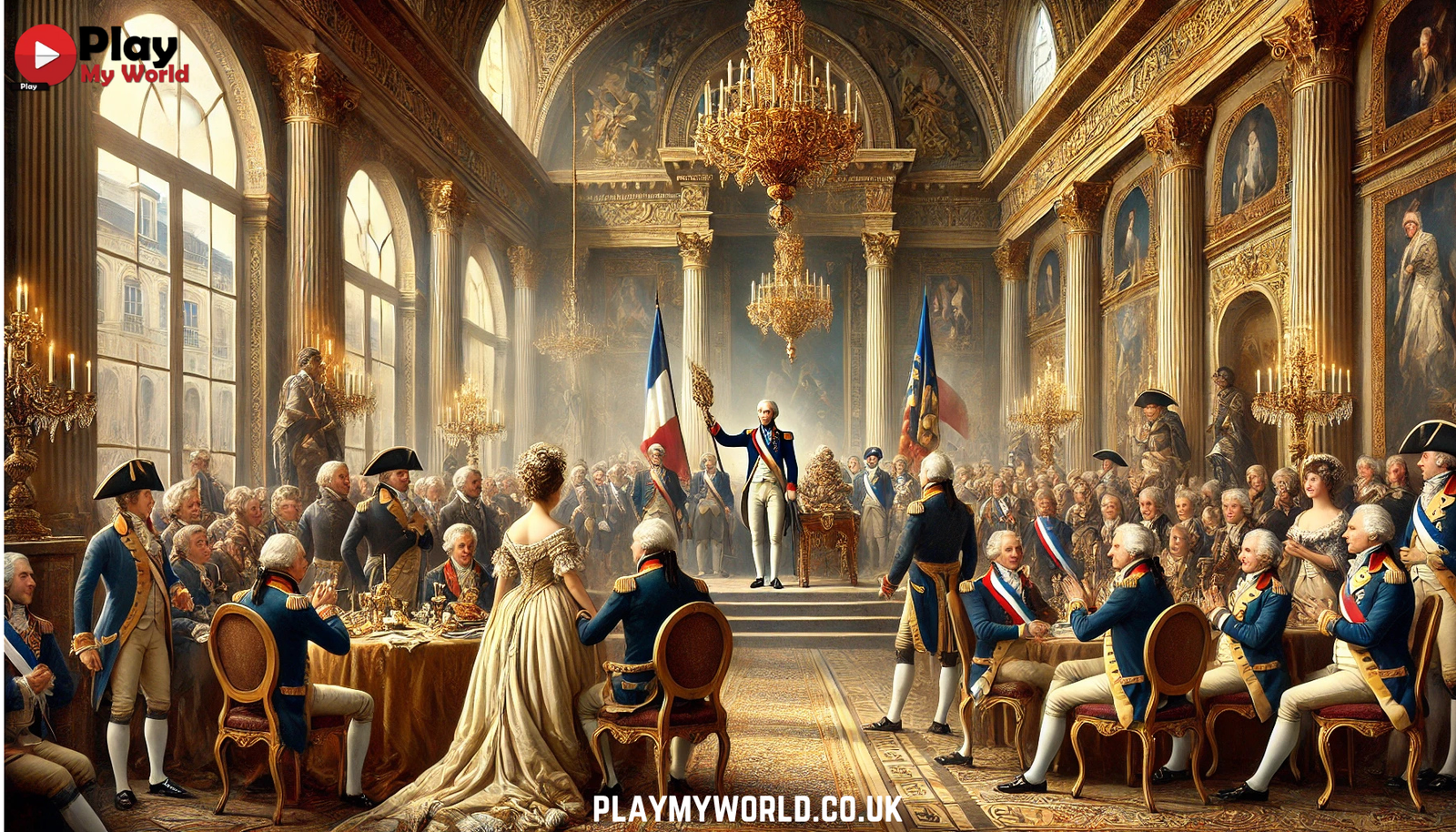Introduction: Understanding the Post-Napoleonic Order
The Congress of Vienna (1814–1815) was a pivotal moment in European history, aimed at restoring stability and political order after the chaos of the French Revolution and Napoleonic Wars. As European powers redefined borders and reestablished monarchies, French conservatives emerged with a distinct vision for France’s future. Their central goal was to reverse the revolutionary changes and return to the traditional monarchical structure that had been disrupted since 1789.
The question Which statement reflects the view of French conservatives after the Congress of Vienna? touches on this crucial moment in French and European politics. This article explores the conservative reaction in post-Napoleonic France, focusing on their ideology, goals, and the broader impact of their political stance.
The Rise of Conservatism in Post-Revolutionary France
Following the collapse of Napoleon’s empire, France was left politically unstable. The revolutionary ideals of liberty, equality, and fraternity had upended centuries of absolute monarchy, social hierarchy, and religious authority.
French conservatives, many of whom belonged to the nobility, clergy, or monarchist factions, viewed the revolution as a dangerous upheaval. They feared that without strong leadership and social order, France would spiral into anarchy again.
Their vision was grounded in the belief that traditional institutions—the monarchy, the Catholic Church, and the aristocracy—were essential for a stable and moral society.
Also Read: Showbizztoday.com Gossip Entertainment: The Ultimate Source for Celebrity News & Showbiz Buzz
The Conservative Agenda After the Congress of Vienna
The Congress of Vienna, largely dominated by conservative figures like Austria’s Prince Metternich, sought to suppress revolutionary movements across Europe. In France, the Bourbon monarchy was restored under King Louis XVIII, a move welcomed by French conservatives.
Key Conservative Objectives:
- Restore the Monarchy: Conservatives supported the reinstatement of the Bourbon dynasty, believing that only a legitimate monarch could ensure national unity and prevent revolution.
- Reinstate the Old Social Order: Nobles who had fled during the revolution were encouraged to return, and efforts were made to restore their titles, privileges, and properties.
- Strengthen the Role of the Church: The Catholic Church was once again promoted as a moral authority. Religious education and clerical influence in public life were revived.
- Suppress Liberalism and Republicanism: Any expression of revolutionary ideas, political liberalism, or calls for a republic was seen as a threat to national stability and was often censored or repressed.
These policies formed the foundation of reactionary conservatism in early 19th-century France.
Which Statement Best Reflects Their View?
Based on historical evidence and conservative rhetoric of the time, the following statement best reflects the view of French conservatives after the Congress of Vienna:
“They wanted to restore the monarchy and return to a pre-revolutionary social and political order.”
This encapsulates the core of conservative ideology: a desire to roll back revolutionary changes and reestablish the institutions and hierarchies of the Ancien Régime.
Step-by-Step Guide: How French Conservatives Acted on Their Ideals
Understanding how these conservative goals were implemented provides a deeper insight into the political climate of post-Napoleonic France.
Step 1: Reestablish the Bourbon Monarchy
- Louis XVIII was placed on the throne in 1814.
- The Charter of 1814 was issued to create a constitutional monarchy, though it heavily favored royal authority.
Step 2: Reinstate Nobility and Aristocratic Privilege
- Nobles were allowed to reclaim confiscated land.
- The aristocracy regained influence in politics and military leadership.
Step 3: Support the Church’s Role in Governance
- Religious instruction was restored in schools.
- The Church regained authority over marriage and civil matters.
Step 4: Suppress Opposition
- Press freedoms were restricted.
- Secret police monitored liberal and republican groups.
- Censorship laws were tightened to prevent dissent.
This strategy of gradual but firm control shaped France’s political direction for decades.
The Long-Term Effects of Conservative Policies
While French conservatives successfully reestablished the monarchy and traditional order in the short term, the tension between monarchist authority and revolutionary ideals continued to grow.
By 1830, a liberal uprising known as the July Revolution overthrew the Bourbon monarchy again, replacing it with a constitutional monarchy under Louis-Philippe, showing that conservative efforts were ultimately met with persistent resistance.
Nonetheless, the conservative influence from 1815 to 1830 laid the groundwork for the modern struggle between tradition and progress, a theme that would recur throughout 19th-century European politics.
Also Read: Tech TheBoringMagazine: A Deep Dive into the Unseen Aspects of Technology
Conclusion: The Conservative Reaction in Context
The best summary of French conservatives’ stance after the Congress of Vienna is simple yet powerful: They sought to restore the monarchy and return to a pre-revolutionary order. This view was driven by a belief in hierarchy, tradition, and stability, in contrast to the revolutionary push for democracy and equality.
While their policies temporarily restored the old regime, they could not erase the revolutionary spirit from French society. The ideological divide between conservatives and liberals remained a defining feature of French politics, sparking future revolutions and shaping the modern political landscape.
Understanding this conservative perspective helps us grasp not only the complexities of post-Napoleonic France but also the enduring tension between order and change, a struggle still relevant in global politics today.
Frequently Asked Questions (FAQs)
1. What was the main goal of French conservatives after the Congress of Vienna?
French conservatives primarily wanted to restore the monarchy and reestablish the pre-revolutionary social hierarchy. They believed that traditional institutions like the monarchy, the Church, and the aristocracy were essential for national stability.
2. Why did conservatives oppose the ideas of the French Revolution?
They viewed the Revolution as a source of chaos, violence, and moral decline. Conservatives feared that revolutionary ideals such as liberty, equality, and fraternity undermined authority, threatened property rights, and dismantled social order.
3. How did the Congress of Vienna support conservative goals in France?
The Congress reinstated the Bourbon monarchy under Louis XVIII and promoted a return to traditional rule across Europe. It provided political legitimacy to monarchs and rejected revolutionary governments, aligning perfectly with conservative interests.
4. What actions did conservatives take to suppress liberal movements?
Conservatives enforced strict censorship, restricted freedom of speech, revived religious control in education, and used secret police to monitor and suppress liberal or republican groups.
5. Did French conservatism succeed in the long run?
While conservatives regained control after 1815, their dominance was short-lived. The July Revolution of 1830 overthrew the Bourbon monarchy again, showing that liberal and democratic ideals remained strong among the public. The tension between conservative and liberal forces continued to shape France’s political future.




